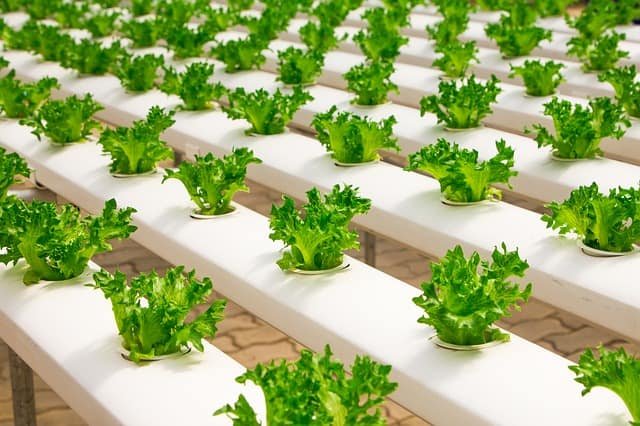Hydroponics is an efficient plant growing and crop production technique. Because of increase in world Population, it’s gaining popularity due to its efficient use of resources.
The word “Hydroponics” is derived from two Greek words. “Hydros” means water and “Ponos” means to work with.
Hydroponics is defined as growing of plants in soilless media, in the nutrient solution with or without the use of artificial media like vermiculite, perlite, rockwool, saw dust, coir etc. In this system, roots of plants are suspended into the liquid nutrient medium from where they uptake essential nutrients required for their growth.
https://www.instagram.com/p/CEIFtnen4rp/
Vegetables grown hydroponically through Soil-Less culture for example;
- Tomatoes
- Bell Peppers
- Lettuce
- Cucumbers
Resources
The resource of land, in addition to being scarcer, has fallen prey to a number of nuisances like Escalating Industrial Demands, Urban Expansion, Extreme Climatic Conditions, Growing Human Population and Relentless Soil Degradation.
Consequently the current pressing scenario, instead of acquiring large pieces of land by production tycoons for large scale crop or plant production, Vertical Soilless Gardens being established on the basis of Hydroponics is therefore a great substitute. Which are a result of technological Advancements and proper management practices.
Seeds that germinate and sprout quickly are in particular best suited for Soil-Less plant growing.
Hydroponics-based Setups demand much less maintenance and therefore require much less time.
If you need a handy guide on soil then we recommend reading “From Dirt to Soil: 7 Ways to Improve Soil Quality here” https://www.northwestaggregates.com/from-dirt-to-soil-7-ways-to-improve-soil-quality-32-w.asp
Solutions
Nutrient solution consists of water and nutrient elements reagents which are necessary for plant growth. Water added in the solution can be obtained from any source like from rivers, ponds, lakes and ground water etc. This natural water can contain some natural mineral elements. So, it is necessary to test the water before using it for hydroponics. Neutral pH water is suitable. It can be sterilized before to kill any possible chances of pathogens present in them. For sterilization UV radiation or heating can be done.
Different types of reagents like potassium dihydrogen phosphate (K2PO4), calcium nitrate [Ca(NO3)2∙4H2O)] and potassium nitrate (KNO3) etc. are used in different formulations depending upon type of plants grown or system followed. A nutrient solution contains all essential elements like Nitrogen (N), Phosphorus (P), and Potassium (K) required for plants proper growth and functioning.
Media
Rooting media gives support to the plants and holds nutrient solution so that plant can effectively absorb most of the solution. There are many types of rooting media available and used in different hydroponic systems like perlite, rockwool, gravel, vermiculite, coconut coir etc.A good rooting media has water holding capacity and large pore size to allow aeration.
Moisture-Wicking Soil-less Nursery Sponges are used instead of Organic Soil, which have the ability to pull moisture away from their area of contact. This moisture is drawn to the exterior of the material, which then evenly distributes moisture to the root zone.
Simple Hydroponic systems can be built by using PVC pipes. The frame is constructed, pipes contains holes in them where rooting media holding a plant is inserted. Therefore as a result the solution flows through these pipes. The pump is attached on one side which gives pressure to make the solution flow. For this reason the basic structure is modified depending upon the type of system followed. There are different types of hydroponic systems which are classified on the basis of nutrient flow, method of supply of nutrients and type of rooting media used. These mainly include nutrient film technique (NFT), aeroponics, water culture system and ebb and flow system etc.
Bottom line
All things considered in the current demanding era, it’s the need of hour to shift towards soil-less plant growing to meet the global food requirements along with mass production of crops. In this way, the Earth will be sustained in an efficient and effective manner. This generation are only caretakers for the next generation.

